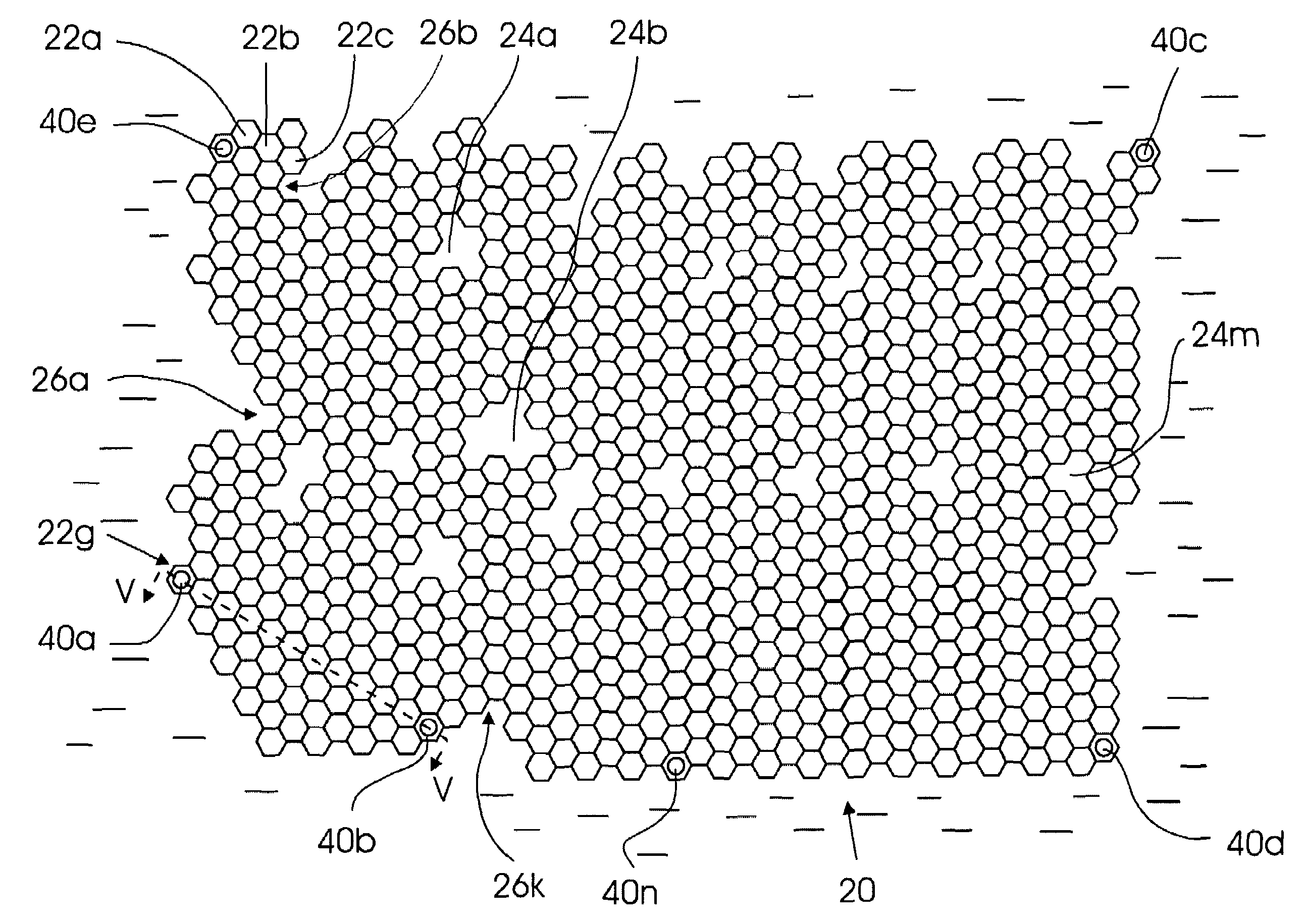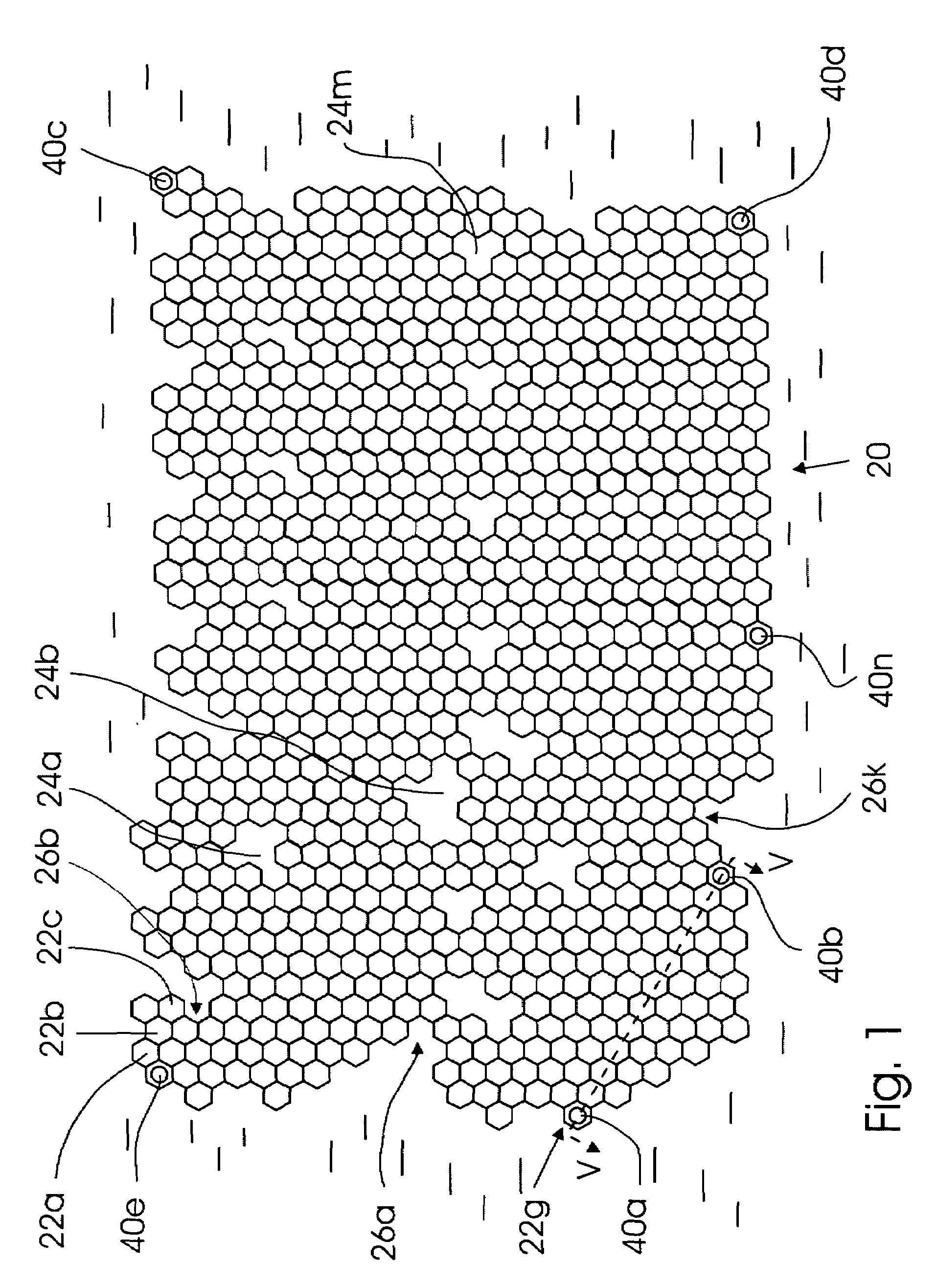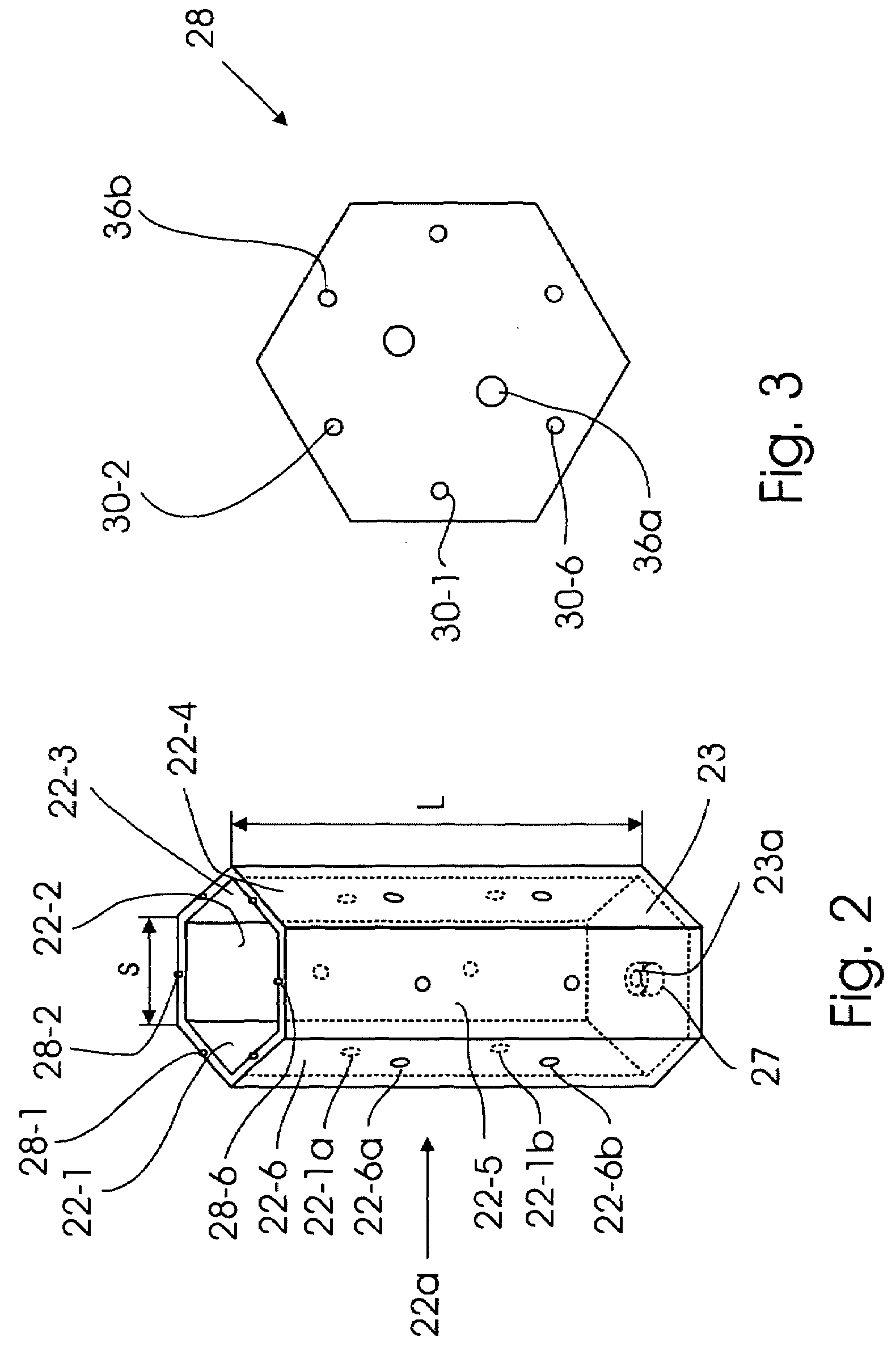Floaing platform with non-uniformly distributed load and method of construction thereof
a floating platform and load technology, applied in waterborne vessels, special-purpose vessels, constructions, etc., can solve the problems of large-scale offshore oil and gas fields, the risk of increasing the level of the world ocean, and the difficulty of ensuring the safety of the floating platform,
- Summary
- Abstract
- Description
- Claims
- Application Information
AI Technical Summary
Benefits of technology
Problems solved by technology
Method used
Image
Examples
Embodiment Construction
[0034]A general top view of the floating platform of the invention is shown in FIG. 1. It can be seen that in the top view the floating platform that as a whole is designated by reference numeral 20 comprises a mosaic of standardized floating structural elements 22a, 22b, . . . 22n which in a top view and in a transverse cross section have a shape that allow packing of said elements into a monolithic body with the top surfaces of the elements forming a continuous surface. An example of such a shape is a hexagonal cross section. In a top view as well as in a transverse cross-section the standardized floating structural elements 22a, 22b, . . . 22n (hereinafter referred to as structural elements) may have a triangular, square, or another shape, but the hexagonal shape is preferable. The mosaic of the structural elements shown in FIG. 1 is formed by the upper end faces of the structural elements 22a, 22b, . . . 22n, and the elements themselves will be described in detail later. It can ...
PUM
 Login to View More
Login to View More Abstract
Description
Claims
Application Information
 Login to View More
Login to View More - Generate Ideas
- Intellectual Property
- Life Sciences
- Materials
- Tech Scout
- Unparalleled Data Quality
- Higher Quality Content
- 60% Fewer Hallucinations
Browse by: Latest US Patents, China's latest patents, Technical Efficacy Thesaurus, Application Domain, Technology Topic, Popular Technical Reports.
© 2025 PatSnap. All rights reserved.Legal|Privacy policy|Modern Slavery Act Transparency Statement|Sitemap|About US| Contact US: help@patsnap.com



